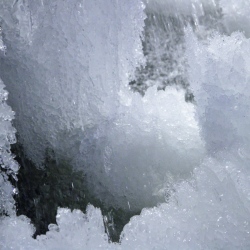
Springtime snow on Arctic sea ice has thinned dramatically in the last 50 years, up to about half in some areas.The new finding track changes in snow depth over several decades and asserts the snow levels dropped by about a third in the Western Hemisphere and half near Alaska.
The study combines data from NASA’s Bromide, Ozone, and Mercury Experiment field campaign, NASA’s Operation IceBridge flights and readings acquired from instrumented buoys and ice floes staffed by Soviet scientists from the 1950s through the 1990s. "The snow cover is like a shield that can insulate sea ice," Son Nghiem of NASA’s Jet Propulsion Laboratory in Pasadena, Calif., principal investigator for BROMEX and a coauthor of the new study, said in an agency news release. "In this study, we had thousands of measurements of snow depth on sea ice to thoroughly validate NASA’s aircraft observations. We knew Arctic sea ice was decreasing, but the snow cover has become so thin that its shield has become a veil."
